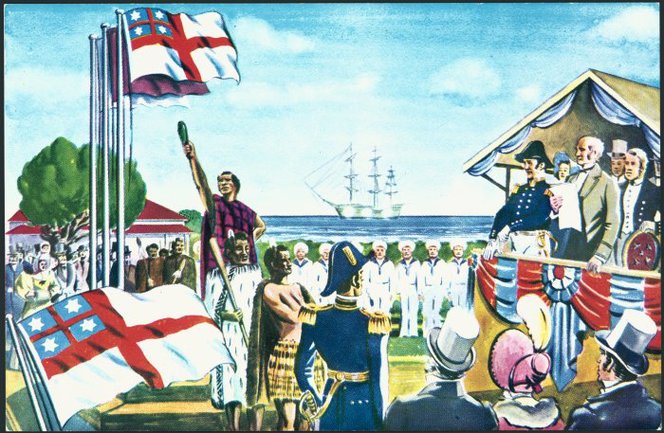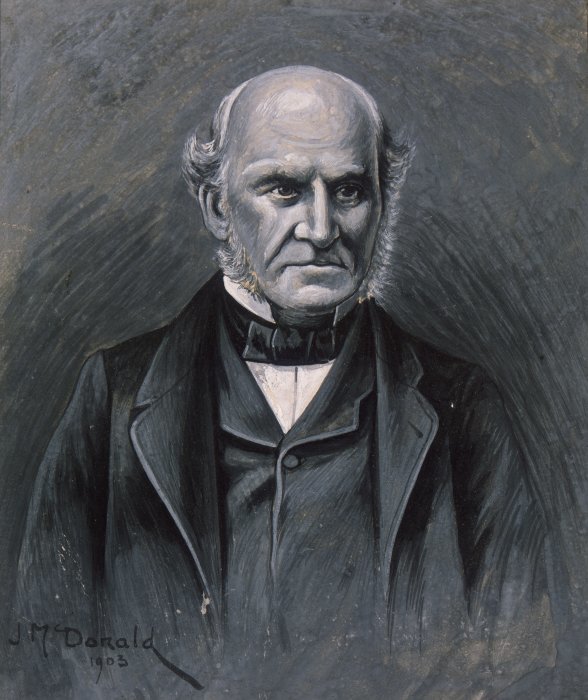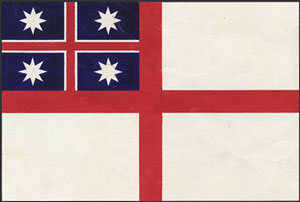The history of Māori migration and settlement in Aotearoa and the stories of Te Ao Māori (The Māori World) have been retained in the oral histories of each iwi (tribe) and hapu (sub-tribe). Histories of the Māori people are told in the creation stories.
European discovery of New Zealand occurred in 1642 with the arrival of Abel Tasman and contact was extended from 1769-70 when James Cook’s expedition mapped much of the coastline.
By the late 1830s, the inhabitants of New Zealand consisted of approximately 125,000 Māori and about 2000 settlers. The largest European settlement was Kororāreka (now known as Russell).
![Barry, James, fl 1818-1846. Barry, James :[The Rev Thomas Kendall and the Maori chiefs Hongi and Waikato] 1820. Ref: G-618. Alexander Turnbull Library, Wellington, New Zealand. http://natlib.govt.nz/records/23241174](https://christchurchcitylibraries.com/Kids/Treaty-Zone/imgs/23241174.jpg)
Pressures on Māori from European settlers
Europeans settled permanently in New Zealand and wanted to buy land for farms and houses. Most settlers did not understand Māori land tenure processes and Māori law concepts, or structures for social cohesion and due to these misunderstandings many skirmishes – some quite bloody – occurred.
Other European countries, in particular France, were becoming more interested in New Zealand as a source of trade or as a possible colony for settlement. In 1831 a petition signed by 13 northern Māori chiefs was sent to King William IV, asking for protection and recognition of their special trade and missionary contacts with Britain.

Declaration of Independence of New Zealand
James Busby was appointed in 1833 as the British Resident in New Zealand to act as a go-between for Māori and European and to watch over British interests. In 1834 Busby invited the northern chiefs to Waitangi to choose a New Zealand flag, which could be used on New Zealand ships to identify them. This flag was known as ‘The United Tribes flag’. This was replaced after the signing of the Treaty of Waitangi by the Union Jack, the flag of Great Britain.

Sovereignty and possession of land and trading rights were issues for both Māori and Pākehā throughout the 1830s. The British were worried about French interest in New Zealand. This was exacerbated by Baron Charles de Thierry declaring himself ‘Sovereign Chief’ of New Zealand in 1835 when he took possession of land he claimed he had bought in the Hokianga.
On the 28 October 1835, James Busby organised a meeting at Waitangi where 34 chiefs signed a ‘Declaration of the Independence of New Zealand — He Whakaputanga o te Rangatiratanga o Nu Tireni’ and formed a ‘Confederation of the United Tribes of Aotearoa’. In the Declaration they asked for William IV, King of England, to act as the Protector of the new state against any attempts on its independence. By 1839 a total of 52 Māori chiefs had signed the Declaration, which they saw as the guarantee of their independence.

Recommended reading
- Pre-1840 contact New Zealand History Online
- Declaration of Independence - taming the frontier? New Zealand History Online
- The Declaration of Independence Waitangi Associates
- The New Zealand Company and early Pākehā land settlement Te Ara: Encyclopedia of New Zealand
- Edward Gibbon Wakefield and the New Zealand Company Christchurch City Libraries
- Tikanga Māori Pre-1840 by Timoti Gallagher from Te Kāhui Kura Māori, Volume 0, Issue 1
- He Hinatore ki te Ao Māori - A Glimpse into the Māori World Ministry of Justice
Further reading on pre-1840 New Zealand from Papers Past and the New Zealand Electronic Text Collection. This content needs to be considered in relation to the time and context in which it was written:
- History of Kororareka Chapter from a book published 1895; The New Zealand reader by William Pember Reeves
- New Zealand Gazette and Wellington Spectator, Volume I, 21 August 1839, Page 4 – article about the Colonisation of New Zealand
- New Zealand Gazette and Wellington Spectator, Volume I, 21 August 1839, Page 6 – article referring to the New Zealand Company
- Police Reports published in 1840 (Papers Past)
Next page: The Signing of the Treaty

